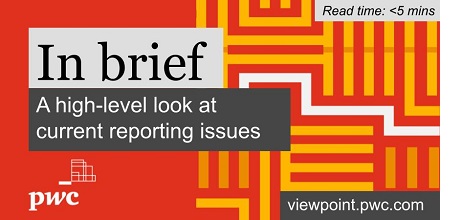Key points
The IASB has published an exposure draft proposing narrow-scope amendments to IFRS 9 ‘Financial Instruments’ and IFRS 7 ‘Financial Instruments: Disclosures’ to help entities better reflect, in their financial statements, the effects of entering into renewable electricity contracts.
What is the issue?
Contracts for electricity from renewable energy sources, such as wind and solar power, play an important role in many entities’ sustainability commitments.
These contracts are often structured as long-term ‘power purchase agreements’ (‘PPAs’). One type of PPA provides the purchaser with a fixed proportion of electricity generated by the renewable energy source at a fixed price per unit (“physical PPAs”). Another type of PPA contains a swap that net-settles the difference between a fixed-price cash flow and a floating-price cash flow related to a proportion of the volume of renewable electricity produced (“virtual PPAs” or “VPPAs”). Often these contracts also result in an entity purchasing renewable energy certificates (“RECs”).
Unlike conventional energy sources, the timing and volume of renewable electricity production is unpredictable due to its nature-dependency. This means that for the contracts described above, there is no direct link between the seller’s production and the purchaser’s needs at the time of production. This creates challenges in practice in accounting for these contracts—particularly the criteria for the ‘own use’ exception in IFRS 9 for physical PPAs, and for hedge accounting.
What is the impact?
As these contracts become more prevalent, the IASB is proposing
narrow-scope amendments to the own use requirements and the hedge accounting requirements of IFRS 9, in addition to new disclosure requirements in IFRS 7.
The amendments are targeted to apply only to contracts for renewable electricity for which the source of production is nature-dependent so that supply cannot be guaranteed at specified times or for specified volumes, and the contract is on a ‘pay-as-produced’ basis.
The own use requirements
The IASB is proposing requirements explaining that when assessing if a renewable electricity contract qualifies for the own use exception, a purchaser would consider:
- the purpose, design and structure of the contract, including the volume expected to be delivered over the remaining duration of the contract; and
- the reasons for past and expected sales of unused electricity, and whether they are in accordance with the entity’s expected purchase or usage requirements.
Applying the proposals, a sale of unused electricity would not violate the own use exception if:
- the sale takes place because the entity’s exposure to the volume risk has given rise to a mismatch between the electricity delivered and the purchaser’s demand at the time of delivery;
- the design and operation of the market in which the electricity is sold results in the entity not having the practical ability to determine the timing or price of the sale; and
- the entity expects to purchase at least an equivalent volume of electricity within a reasonable time after the sale (for example, within one month).
The hedge accounting requirements
Difficulties have arisen for entities applying hedge accounting to renewable electricity contracts because IFRS 9 requires the hedged item in a cash flow hedge to be “highly probable” of occurring.
The IASB is proposing requirements for when a renewable electricity contract is designated as the hedging instrument in a cash flow hedge of forecasted sales or purchases of electricity. Applying the proposals, an entity would be permitted to designate a variable nominal volume as the hedged item, if and only if:
- the hedged item is specified as the variable volume of electricity to which the hedging instrument relates; and
- the variable volume of forecast electricity transactions designated in accordance with a) does not exceed the volume of future electricity transactions that are highly probable.
However, if an entity designates renewable electricity sales in accordance with a) above, such forecasted sales would not be required to be highly probable if the hedging instrument relates to a proportion of the total future renewable electricity sales from the production facility, as referenced in the contract for renewable electricity.
An entity would be required to measure the hedged item using the same volume assumptions as those used for measuring the hedging instrument. All other assumptions and inputs used for measuring the hedged item must be reflective of the hedged item only.
Disclosure requirements
The IASB is proposing that for renewable electricity contracts, an entity would be required to disclose the terms and conditions of the contracts and specified quantitative information. The quantitative information includes information related to amounts recognised in the entity’s statement of profit or loss for the period. For contracts not measured at fair value through profit or loss, it would also be required to disclose the contract’s fair value or, alternatively, the expected volume to be purchased (for the purchaser) or sold (for the seller) over the remaining life of the contract.
Transition
The IASB is proposing:
- the “own use” amendments would apply retrospectively, but without requiring restatement of comparatives.
- the hedge accounting amendments would apply prospectively to new hedging relationships, with specific transition requirements for existing hedging relationships.
What are the next steps?
The exposure draft is
open for comment until 7 August 2024. The IASB expects to finalise the amendments by the end of 2024. An effective date will be set when the amendments are finalised, with an option to early adopt (subject to any endorsement processes).
Where do I get more details?













